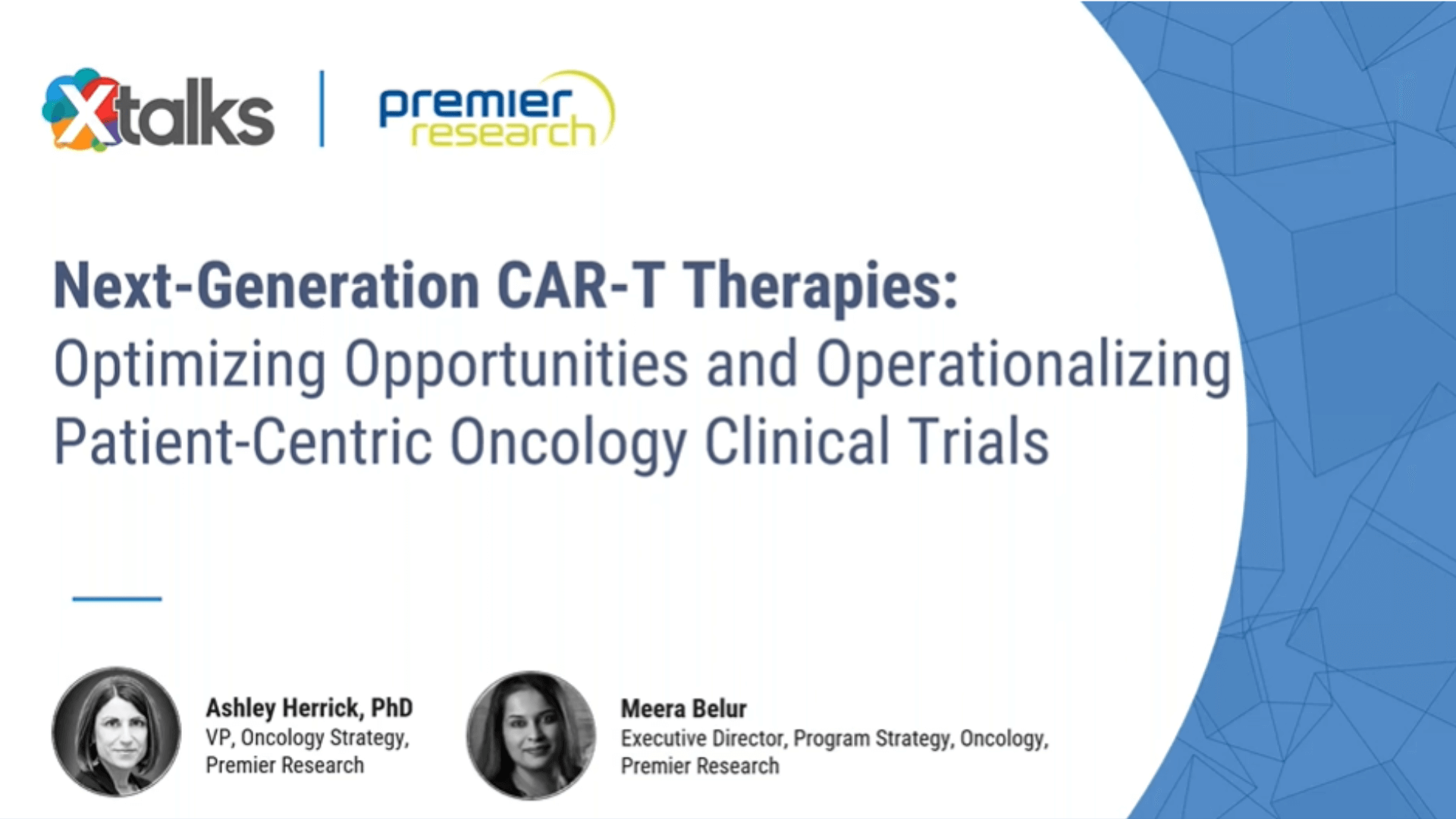“The challenges in today’s CAR-T landscape are all geared toward a better overall patient experience. This presentation focuses on how next-gen CAR-T therapies are reducing the overall burden on patients while improving the safety and duration of response.”
We know your time is valuable.
Here are the top 5 takeaways from this webinar and their relevant timepoints in the downloadable file at the right. Go ahead skip to the good parts. We won’t tell.
- 06:42: The challenges with expanding to solid tumors.
“While CAR-T therapy has been highly effective in hematologic malignancies, applying it to solid tumors has been challenging due in part to tumor heterogeneity, difficulties in tumor cell infiltration and the challenges of the tumor microenvironment.” - 11:55: Current barriers in CAR-T development.
“…these trials are often very complex, very challenging to implement, and very costly. We know that there remains room for improvement.” - 15:43: Promising recent advancements in CAR-T. “Researchers are developing novel approaches to CAR-T therapy to address the limitations of earlier generations. This could be improved safety profiles, better efficacy and duration of response, and more efficient manufacturing.”
- 27:05: The Impact of Next-Gen CAR-T on trial operations. “Conducting clinical trials for ex vivo CAR-T therapies, which is essentially referred to us as the vein-to-vein journey, involves several operational challenges such as orchestrating manufacturing, managing logistics, and managing adverse events. Next-Gen CAR-T therapies offer potential improvements for streamlining clinical trial operations, particularly with respect to improved targeting and safety profiles, scalability and accessibility, automation, and standardization.”
- 33:33: Alleviating burden on patients. Patient accessibility and study burden continue to be significant hurdles in CAR-T therapy clinical trials. The specialized nature of these therapies often limits access to a smaller number of trial sites, creating a sort of geographic barrier and necessitating patient travel.
Ready to get started? So are we.
Drop us a line to learn more about how we can help.

